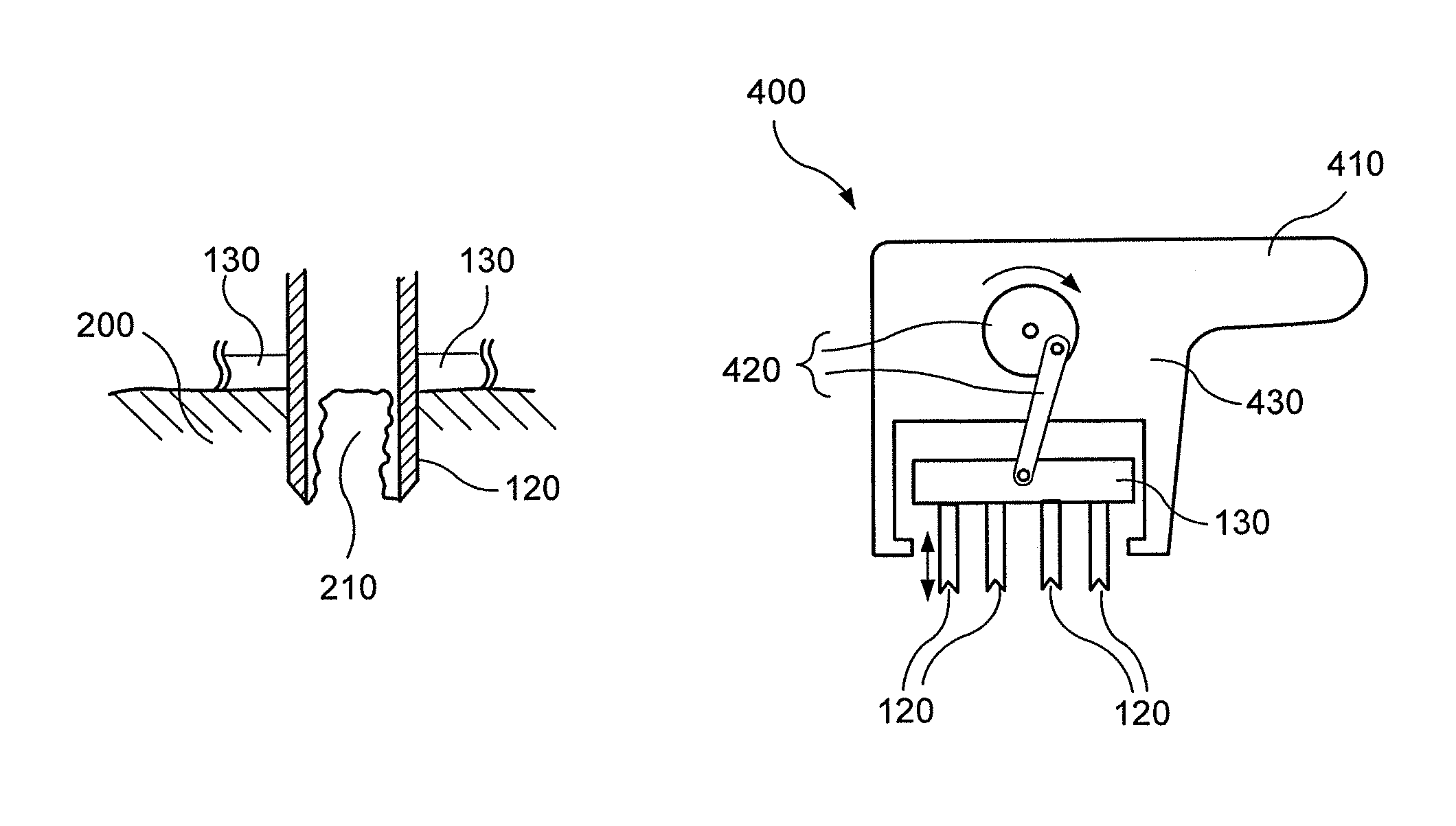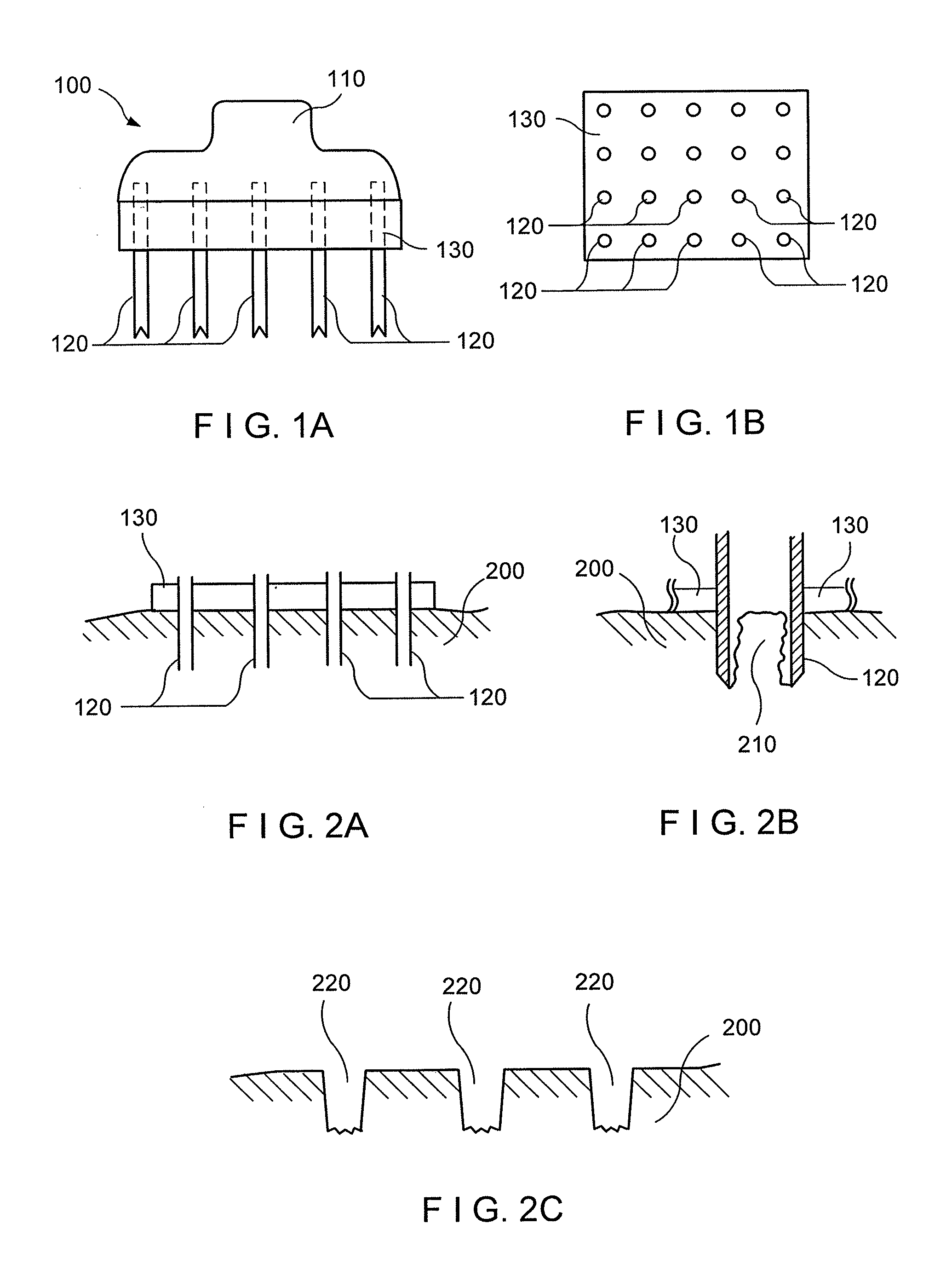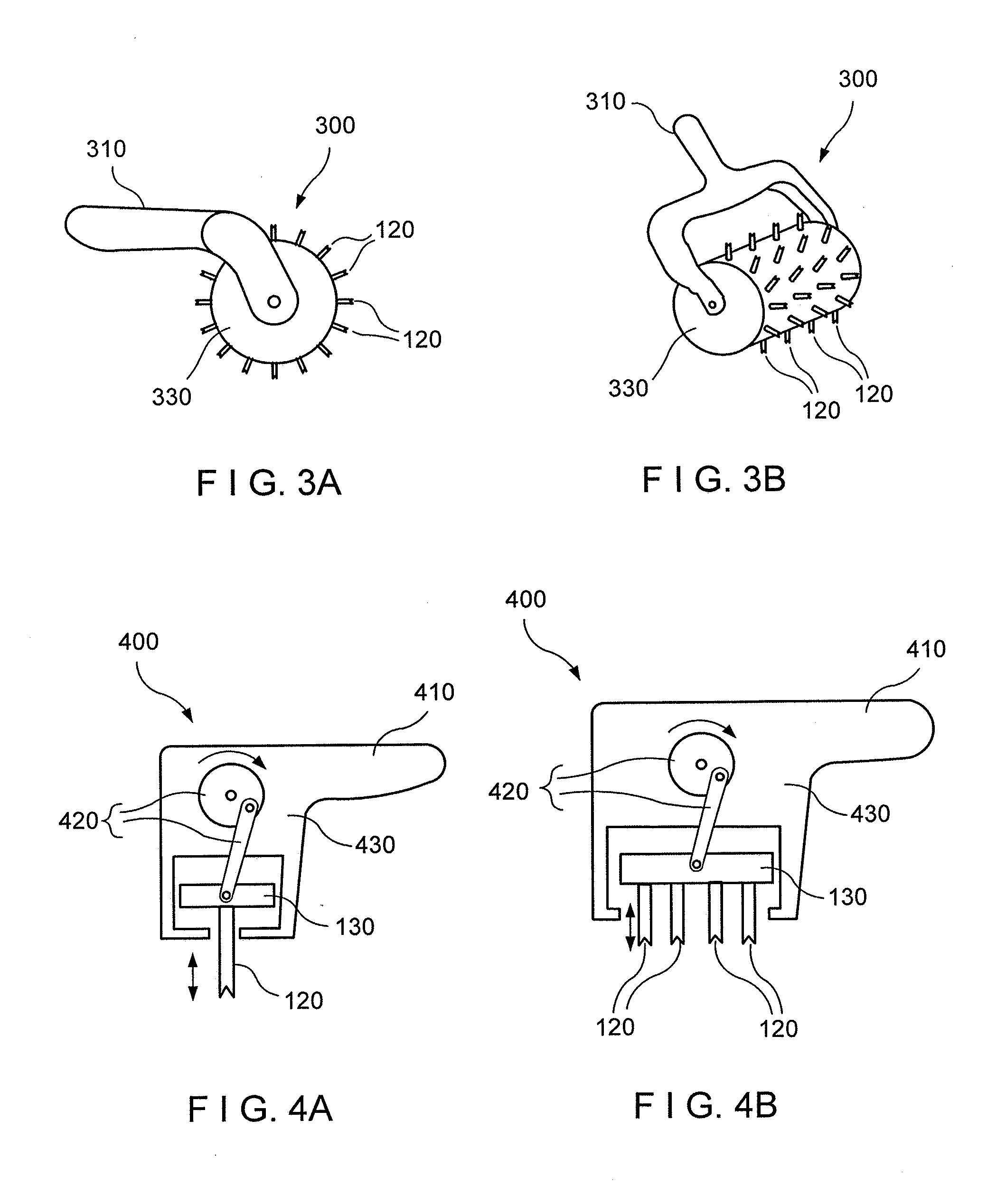Method and apparatus for skin resurfacing
a skin resurfacing and skin technology, applied in the field of cosmetic methods and equipment, can solve the problems of poor side effects of laser resurfacing, skin loss, wrinkles and laxity,
- Summary
- Abstract
- Description
- Claims
- Application Information
AI Technical Summary
Benefits of technology
Problems solved by technology
Method used
Image
Examples
example
[0081]A large-animal study of the method and apparatus according to certain exemplary embodiments of the present invention was performed. Tissue coring needles were produced by modifying conventional hypodermic needles, so that a cylindrical area of tissue is removed when they puncture the skin and are then withdrawn, similar to a core biopsy but on a smaller size scale. Standard 25 gauge hypodermic needles (e.g., Becton Dickinson, Franklin Lakes, N.J.), having a 260 micron inner diameter, were ground down such that their anti-beveled edges were removed, to form hollow needles having a double-crown or double-pronged tip, such as that illustrated in FIG. 5B. Devices were prepared in accordance with embodiments of the present invention that include four such coring needles affixed in a 2×2×4 cm block of rubber. The needles were provided in a square array, with 8 mm of separation between the needles along the sides of the square, and with the distal ends of the needles extending 4 mm f...
PUM
 Login to View More
Login to View More Abstract
Description
Claims
Application Information
 Login to View More
Login to View More - R&D
- Intellectual Property
- Life Sciences
- Materials
- Tech Scout
- Unparalleled Data Quality
- Higher Quality Content
- 60% Fewer Hallucinations
Browse by: Latest US Patents, China's latest patents, Technical Efficacy Thesaurus, Application Domain, Technology Topic, Popular Technical Reports.
© 2025 PatSnap. All rights reserved.Legal|Privacy policy|Modern Slavery Act Transparency Statement|Sitemap|About US| Contact US: help@patsnap.com



